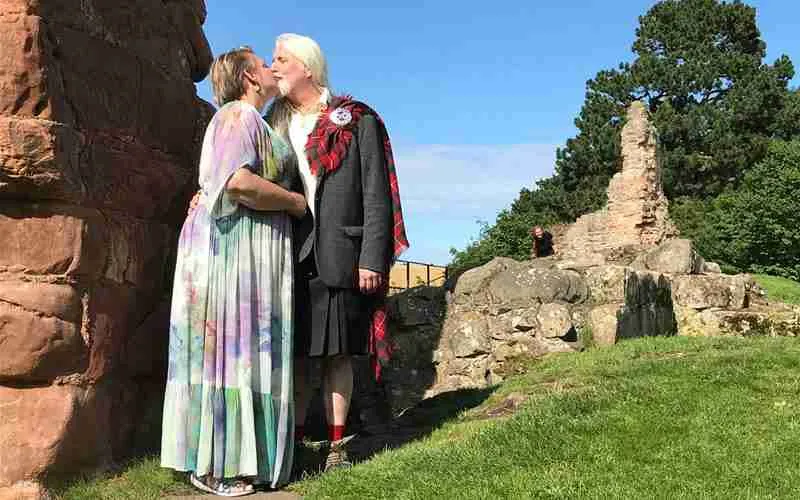
When you have been researching your Scottish family history, you may have come across in a marriage register or kirk session minute that two people had an irregular marriage. At this point, your immediate question is ‘What is an irregular marriage in Scotland?’ If you are not familiar with Scottish marriage laws, then this is a perfectly good question to ask and this post attempts to answer it for you:
What is an irregular marriage in Scotland?
There are three definitions of an irregular marriage:
- by ‘declaration’ – when a woman and man made a declaration in front of witnesses. This was sometimes known as ‘marriage by declaration’ or a ‘clandestine marriage’. In essence, they were legally married without the kirk being involved. Although legal, the kirk did not approve of this type of marriage.
- ‘by habit and repute’ – when their friends and family knew the couple as husband and wife. Also known as common law husband and wife, if the couple lived together for a long period of time, then it was presumed that they were married or had made a declaration. Marriage by cohabitation with habit and repute was abolished by the Family Law (Scotland) Act 2006.
- by ‘promise subsequente copula’ – A promise of marriage or an oath sworn followed by fornication was also considered as an irregular marriage, but there had to be proof.
Irregular marriage meaning
So, what does it mean to be irregularly married? It meant the same as being married by the church. Once declared married, in this case without the church’s consent, the couple could live together and have a family.
The Church of Scotland disapproved of these marriages because the church believed couples were ‘living in sin’. References about irregular marriages frequently appeared in Kirk Session minutes. Couples were reprimanded and married again and/or paid a fine when they were found out. I have written a post on kirk session minutes with more information about their contents which may be of use to you.
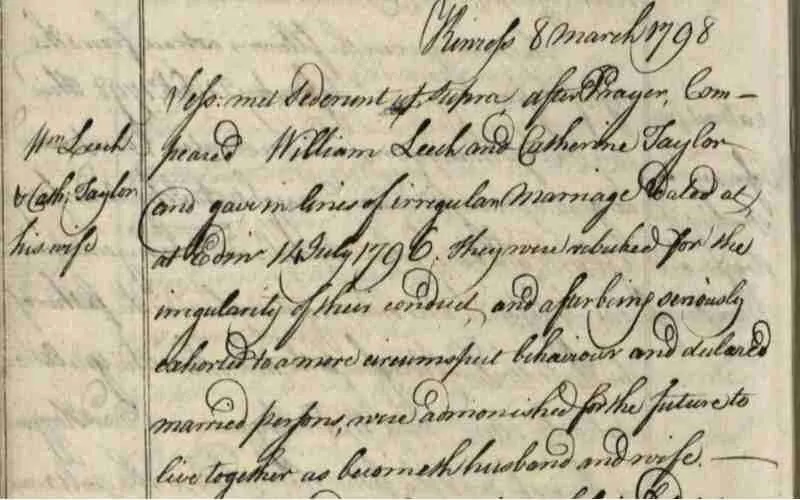
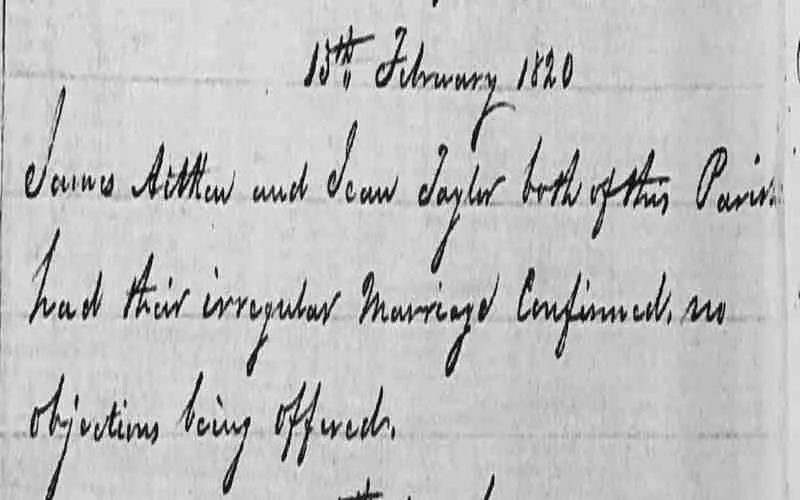
Why have an irregular marriage?
A couple may want to declare themselves married if they were in a hurry. Irregular marriages were much quicker to arrange than a marriage in a church because the banns did not have to be read over a period of weeks. For example, the woman may be pregnant, the couple did not have their parents’ consent, they were travellers and were moving on to another parish, or in some cases one of them may have been a bigamist.
What is an ‘irregular marriage warrant of sheriff’ in Scotland?
After 1855 when it was statutory law to register key events, irregular marriages continued to be declared until the law changed in 1940. This type of marriage was registered by the Sheriff Court to receive a warrant to authorise the marriage registration. Known in Scotland as an ‘irregular marriage by sheriff’s warrant’, it used to attract a fine (a fee) until about 1916.
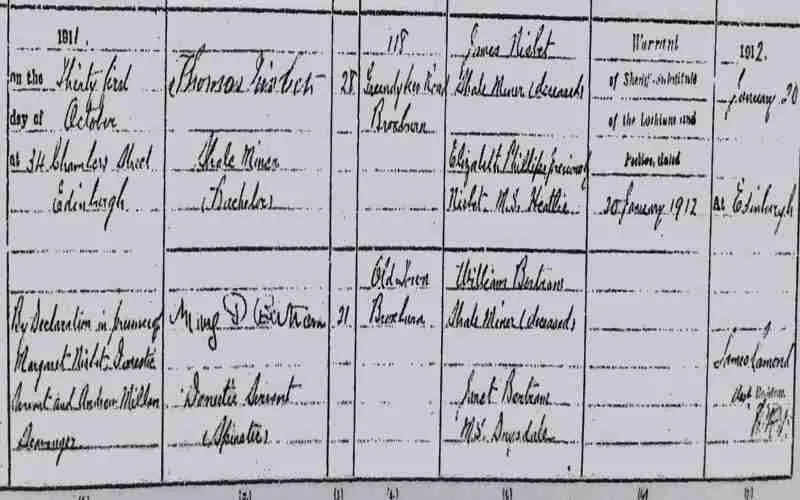
However, it was still cheaper and quicker to have an irregular marriage by sheriff’s warrant than to go through the expense of a regular marriage ceremony and the calling of banns.
After 1940, sheriffs’ warrants ended and couples could have a civil ceremony in the registrar’s office.
History of marriage in Scotland
In Scotland, a marriage was a legal contract based on mutual consent. Before 1939, there were two types of marriages, regular or irregular. Irregular marriages have already been discussed. So, what is a regular marriage?
A ‘regular’ marriage was when banns were called and then a ceremony was performed in accordance with the forms of a particular church, such as the Church of Scotland. Regular marriages did not have to take place inside a church. In fact, they often took place in private homes, normally in the bride’s home.
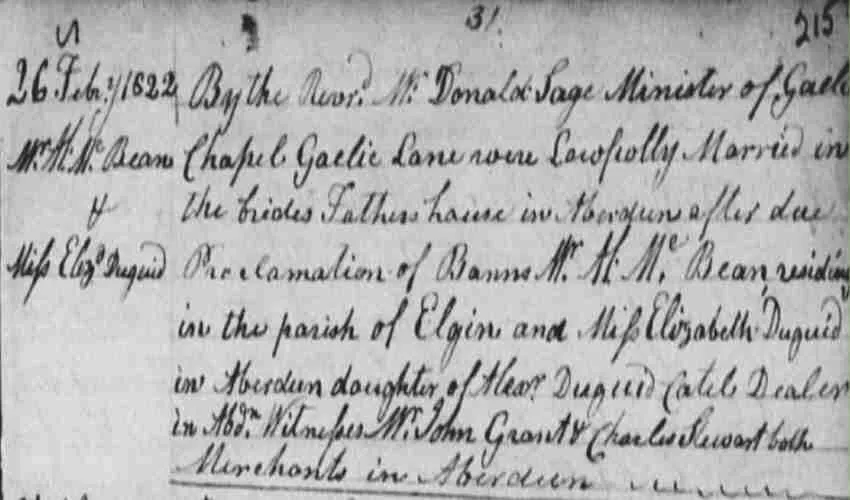
Parental consent was not necessarily required. Boys as young as 14 and girls of 12 could legally marry without their permission. This rule remained in force until 1939, when the age of consent was raised to 16 for both genders.
All Scottish marriage records can be found on the ScotlandsPeople database, either in person at the centre or online.
If you need help with your family history research, then get in touch or leave a comment below.
I will be writing on poor relief records in my next post on how to research your family history so stay in touch. Until my next post, soraidh as we say in Gaelic for ‘see you later’.
You may also like...
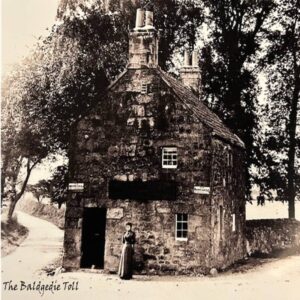
The Life of a Tollkeeper
A tollkeeper was a person who collected road fees from travellers. This old occupation was prominent during the 18th and 19th centuries.
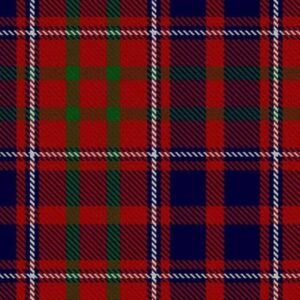
Cameron Surname: Origin, Meaning & History
The Cameron surname has Gaelic origins and it is associated with Clan Cameron, one of the most influential Highland clans.
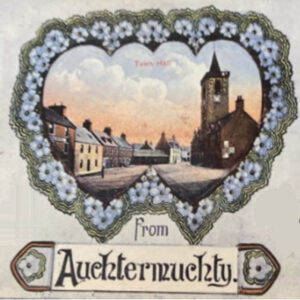
Ancestral Visit to Auchtermuchty, Fife
Auchtermuchty in Fife is known as Muchty to locals. What does Stratheden Whisky, Jimmy Shand and the Proclaimers have in common?
Excellent blog- I’ve learned something new and now it makes sense about my ancestor. Love researching my family tree
Hello Katie
Pleased to hear that my post has helped your family history research. Get in touch if you have any questions.
All the best with the research
Sarah
So does that mean that our handfasting in 2019 (picture above ❤️) was actually an irregular marriage?
Not “legal” in Scotland, but a marriage nonetheless?
Have we been celebrating our anniversary on the wrong date?
Maybe it should be in August instead of October!
Thank you for this Sarah!
Hello Abby
Your handfasting celebration would have been an irregular marriage before 1939. Why not celebrate both dates! and add them to your family tree!
Thanks for the comment
Sarah
I found an entry in a printout from a local newspaper ( it’s just a printed listing of my families surname) it has my great aunt’s name , place,SW then a man’s name, but I cannot find a record of her marriage in Scotland people, so can you suggest where I could look, and would it be common for them to put their marriage in the newspaper (the way people put notified of births, deaths, etc., my great aunt died in 1917, the entry on the list is from 1916, your hints would be most welcome.
Hello Catherine
To double check the man’s name if he was her husband, her Scottish death register would include her husband’s name and occupation. Have you tried searching their marriage using the wildcard function? For example, if one of the surname was Davidson, I would type ‘davi*s*n and this would search for Davidson, Davidsen, Davison, Davisen, etc. For their first name I would use the phonetic matching so for Elizabeth it would search for Elisabeth, Lizzie, etc
They may have married at Gretna or Lamberton – there are publications about the irregular marriages at the National Records of Scotland or at a local library. Alternatively they may have married in England – I would use http://www.freebmd.org.uk in the first instance.
Their marriage may be mentioned in a local newspaper but there is no guarantee – It is worth checking on British Newspaper Archives website.
FindmyPast and Ancestry is also worth checking.
Hope that helps.
Let me know how you get on.